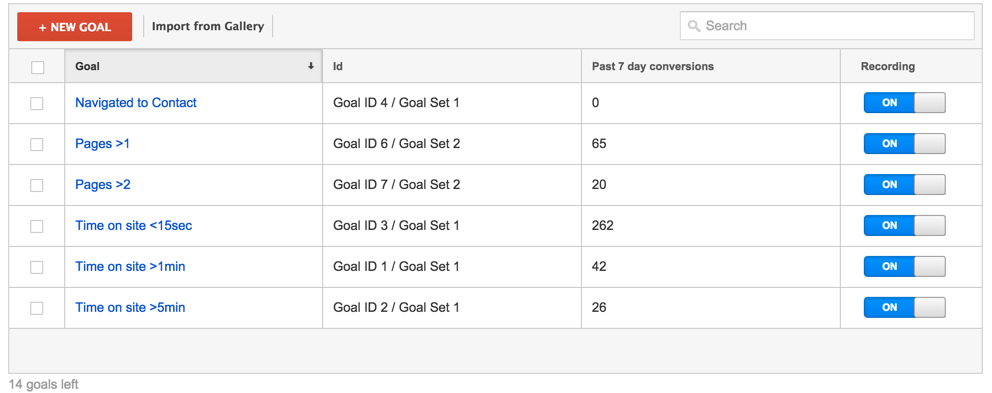Comprehensive Checklist of What Data Is Google Analytics Goals Unable to Track
Comprehensive Checklist of What Data Is Google Analytics Goals Unable to Track
Blog Article
Discover the Limitations of Google Analytics Goals: Revealing the Data Kind That Remain Untrackable
As businesses significantly depend on data-driven decision-making, recognizing the limitations of devices like Google Analytics becomes critical. While Google Analytics Goals deal valuable understandings into customer communications, there exist information kinds that elude tracking, presenting obstacles to an extensive understanding of individual habits.
Incomplete Individual Trip Tracking
Insufficient user journey tracking within Google Analytics can impede the capacity to accurately evaluate user behavior. When the individual trip is not completely tracked, there are spaces in the information that protect against a detailed understanding of how users communicate with a site. This lack of insight can result in missed chances for optimization and enhancements to the user experience.
One common issue with incomplete customer trip monitoring is the failure to see the full path that users take before finishing a goal or leaving the site. Without this information, it is testing to recognize where customers might be running into barriers or friction factors that prevent them from transforming. Furthermore, incomplete tracking can cover the impact of certain advertising initiatives or internet site adjustments on customer habits.
To address this limitation, it is important to set up proper tracking devices within Google Analytics to capture the whole customer trip. This may entail establishing up event monitoring, objective funnels, or utilizing tools like Google Tag Manager to ensure that no vital communications go unrecorded. By gaining a thorough view of the user trip, website owners can make even more enlightened decisions to improve user involvement and drive conversions.
Attribution Difficulties
Navigating with acknowledgment obstacles in Google Analytics requires a complete understanding of just how various touchpoints add to the overall conversion process. Attribution obstacles arise from the complexity of contemporary client journeys, where users communicate with several channels before converting.
One usual attribution difficulty is the problem in attributing conversions to the proper resource, specifically in cases where customers interact with numerous channels prior to transforming. Additionally, cross-device monitoring positions an additional acknowledgment difficulty, as customers typically change in between gadgets throughout their journey, making it challenging to track their communications perfectly.
Offline Conversions
Given the obstacles connected with attributing conversions precisely in online networks, the dimension of offline conversions provides a substantial chance for marketing professionals seeking a much more comprehensive understanding of their consumers' journey. Offline conversions describe activities that clients take in the physical world, such as making acquisitions in brick-and-mortar shops or over the phone, attending events, or engaging with printed products - what data is google analytics goals unable to track. These conversions are essential for services that run both online and offline, as they supply valuable insights into the effectiveness of advertising and marketing campaigns across different touchpoints
Tracking offline conversions typically postured a significant difficulty for marketers, as it was testing to attach these activities back to specific on the internet communications precisely. With innovations in technology, such as the integration of CRM systems, distinct identifiers, and voucher codes, services can currently connect the space in between online and offline data to acquire a much more holistic view of consumer behavior. By successfully determining offline conversions, marketing experts can maximize their strategies, allocate sources extra successfully, and a knockout post ultimately boost the total client experience.
Cross-Device Tracking
Cross-device monitoring plays an important role in understanding the interconnected nature of customers' digital communications throughout several devices. In today's omnichannel globe, where users seamlessly switch over between smart devices, desktops, and tablets, tracking their habits throughout these devices is essential for marketing professionals to acquire a thorough view of their customer journey.

In addition, privacy worries and laws such as GDPR and CCPA have about his further complicated cross-device tracking. With customers requiring even more control over their information and increased limitations on monitoring innovations, marketing experts should discover ingenious and privacy-compliant means to link customer communications across gadgets.
Dynamic Web Content Involvement
Recognizing customer involvement with vibrant web content is essential in enhancing electronic marketing strategies for boosted target market communication. Dynamic web content describes site aspects that transform based on user actions, choices, or various other variables, using an individualized experience. Nonetheless, tracking individual communications with dynamic content positions difficulties for conventional analytics devices like Google Analytics.
While Google Analytics can track fundamental interactions like clicks and web page views, it may have a hard time to record even more nuanced engagements within dynamic material. what data is google analytics goals unable to track. Metrics such as time spent on particular vibrant aspects, hover activities, or interactions within pop-ups are typically not quickly measurable utilizing basic monitoring methods. This constraint hinders marketing professionals' ability to completely realize exactly how users are engaging with dynamic content and customize their methods accordingly

Final Thought
Finally, Google Analytics objectives have limitations in tracking incomplete customer journeys, attributing conversions properly, recording offline conversions, tracking cross-device interactions, and measuring dynamic material engagement. These restraints highlight the importance of exploring additional tracking techniques and devices to gain a more extensive understanding of customer actions and conversions past what Google Analytics can provide.
While Google Analytics Goals deal valuable insights into individual interactions, there exist data types that elude tracking, presenting obstacles to an extensive understanding of individual behavior.Incomplete customer trip monitoring within Google Analytics can impede the capacity to properly examine individual behavior. When the customer trip is not completely tracked, there are spaces in the data that avoid an extensive understanding of exactly how users connect with a site.One common concern with incomplete user trip monitoring is the failure to see the complete path that users take in the past finishing a goal or leaving the site. By acquiring a comprehensive sight of the customer journey, site proprietors can make more educated decisions to enhance customer interaction and drive conversions.
Report this page